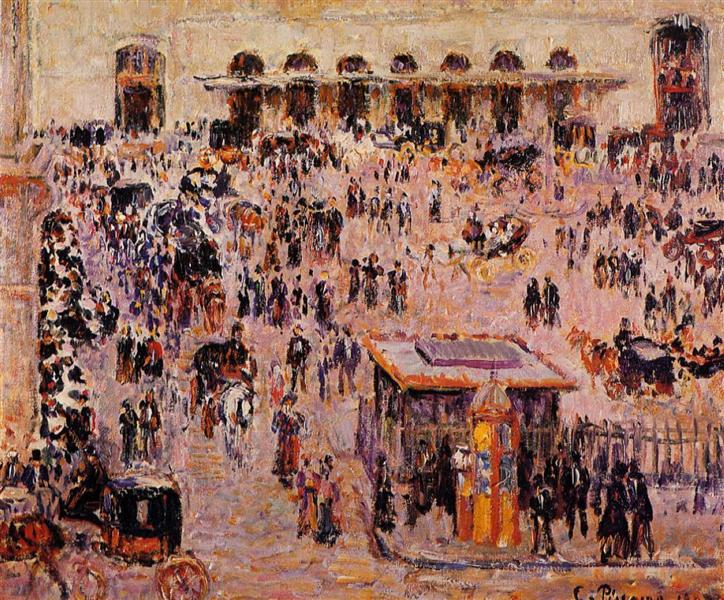描述
卡米尔·皮萨罗(Camille Pissarro)创作的作品“ Cour du havre(Gare St. Lazare)”于1893年创作,位于印象派艺术发展的关键时刻,在印象派艺术的发展中,现代性和城市生活的代表开始具有独特的突出。这幅画不仅是Pissarro的特征技术,而且是其在后工业时代捕捉巴黎生活的节奏和活力的能力。
在这项工作中,Pissarro提供了火车站的全景,这是进步和现代性的象征。该构图是通过低视角组织的,这使观众可以感觉沉浸在现场,几乎就像是在日常喧嚣的中间一样。周围的建筑物以柔软的角度显示,将外观带到了车站的心脏,旅行者竞争朝着平台或等待它们的火车前进。框架的选择是有效的。火车站是巴黎最繁忙的火车站,成为一种社会和建筑现象,反映了19世纪后期欧洲社会的变化。
Pissarro对颜色的使用对于表达这个城市空间的气氛至关重要。所使用的调色板是多种多样且充满活力的,突出了暗示站点的金属结构的灰色和蓝色。同时,在角色的服装和车站的要素中的色彩触摸提供了动态和运动的感觉。灯光和阴影之间的对比捕获了该空间中光的变化性质,从而增强了随着敏捷性移动的数字的几乎空灵效果。松散的笔触和层中的层应用使工作具有发光的质量,典型的印象主义,从而抓住了当下的短暂性。
尽管作品中的角色很微妙,但它们似乎是赋予现场生命的重要元素。您可以看到移动的数字,导致环境中不断活动的空气。这些形式虽然经常示意图,但仍具有足够的本质来暗示故事和目的地,记住每个角色都有自己的旅程的观众。正是在建筑和现代性中,人类的包含在其中,这充分说明了Pissarro的愿景以及他作为他时代的观察者的经历。
印象派运动的主要成员卡米尔·皮萨罗(Camille Pissarro)在这项工作中寻求自然与城市生活之间的平衡,这是其工作中的核心主题。在他的整个职业生涯中,Pissarro对工人阶级的生活和他们所居住的空间保持了不断的兴趣。诸如“Éragny的街道”和“收获”与“ Cour du Havre”共享的作品,该方法是人文主义的方法,即城市和农村元素相互交织在一起,为日常生活提供了外观。
“ Cour du Havre”不仅反映了Pissarro对印象派的承诺,而且还对巴黎和欧洲的转型进行了视觉评论。在19世纪末,工业化正在重新定义城市生活,而Pissarro成为了这种过渡的编年史。这幅画对个人与城市环境之间的相互作用进行了反思,这种对话在当代艺术中仍然相关,在当代艺术中,人类的空间和经验一直在不断发展。
总之,“ Cour du Havre(Gare St. Lazare)”被竖立为杰作,封装了印象派的本质,印象派的本质是邀请我们通过Camille Pisarro的洞察力进入现代性。绘画的视觉提醒是,在混乱和城市生活的喧嚣中,有一个短暂的美丽时刻只有艺术家的细心才能捕捉到。
KUADROS ©,墙上的著名油漆。
手工制作的油画,具有专业艺术家的质量和独特的印章 KUADROS ©.
图片繁殖服务具有满意保证。如果您对绘画的复制品不完全满意,我们将100%退还您的钱。

